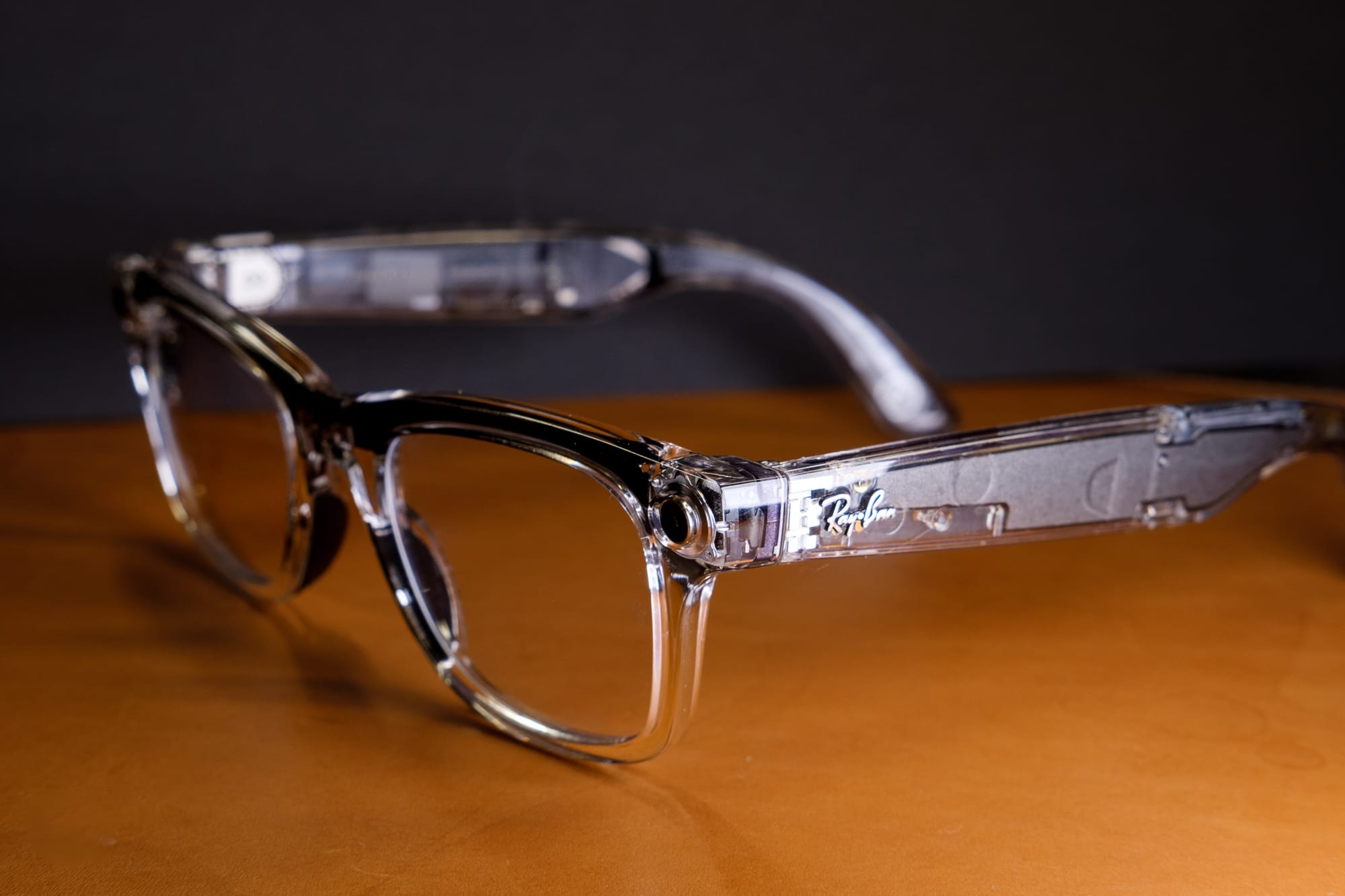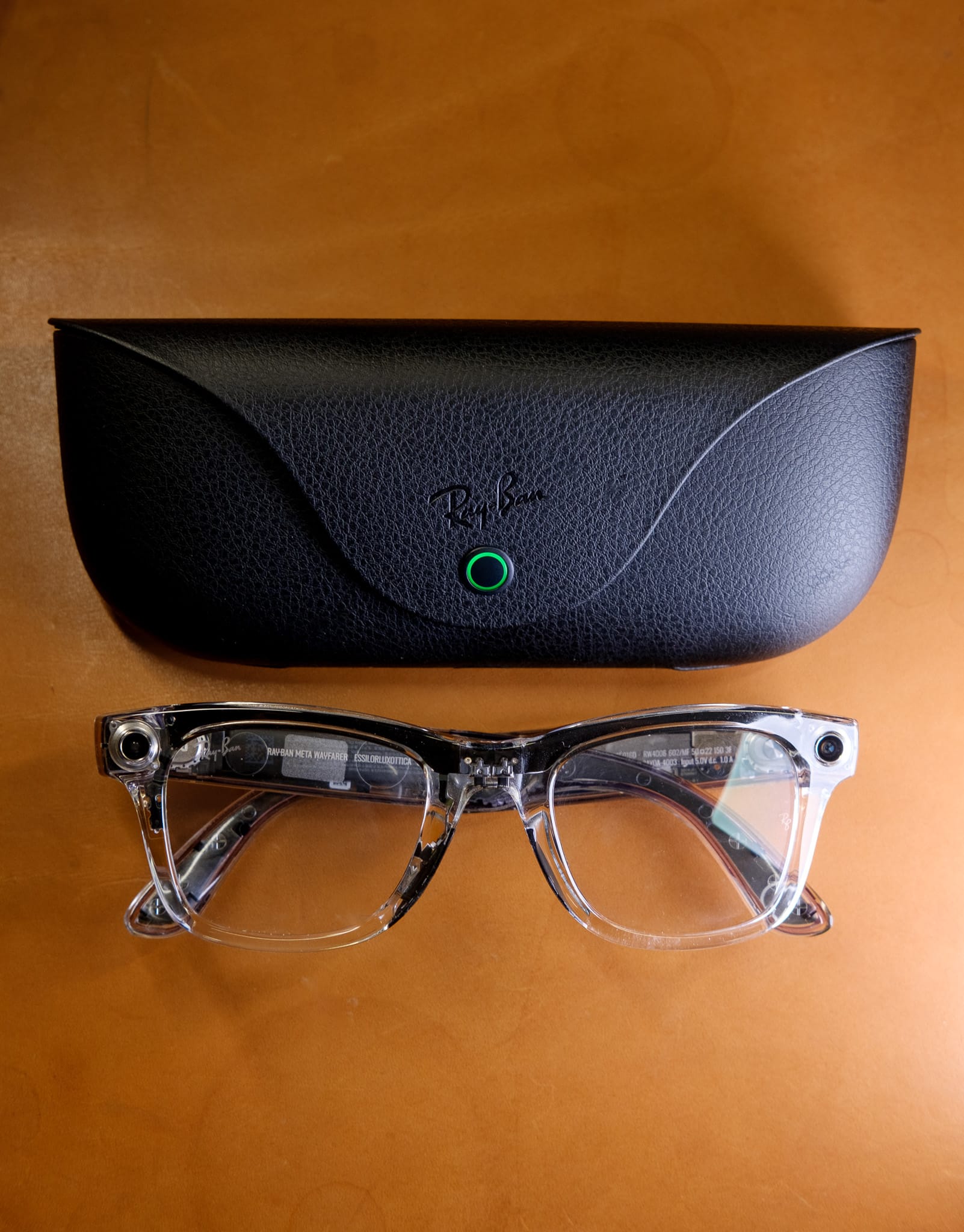THE HIRO LAB: Ray-Ban Meta Limited Edition Smart Glasses
Hey, welcome to The Hiro Lab™! This is a secret, subterranean facility at Hiro Report HQ where I will be occasionally testing and share thoughts on fun tech in a bit more detail than the format of the regular Hiro Report issues allow. Consider the following less a formal review and more a collection of casual first impressions—I’ve only had these glasses for about a week, and I’m not really a product reviewer, more of a cool-stuff-sharer.

I'll start by saying I’ve been curious about the Ray-Ban x Meta smart glasses for a while now and was looking for an excuse to try them out. Last week, fate handed me two:
- I lost my regular, non-smart folding Ray-Ban Wayfarers.
- Meta announced a limited edition Transparent colorway for their Wayfarer-style smart glasses during Meta Connect. Transparent, as in the frames are clear and you can see all the tech inside. Awesome.
(I swear it happened in that order and not the other way around. I basically had to buy a pair.)
In 6 days since they've arrived, I've used them during workouts, horsing around with the kids, running errands around town, and during a long day trip to San Antonio. While I’m not claiming to know everything about them, I’ve definitely formed some opinions.
So, how are they? Well, there’s a lot these glasses can do, so let’s break it down:
How are they as a pair of fun, good-looking sunglasses?
Excellent! Meta’s collaboration with EssilorLuxottica to use the iconic Ray-Ban Wayfarers was a brilliant move. The Transparent design is gorgeous, and even the black charging case looks slick with its small glowing ring to indicate charge status. They seem durable, too—I’ve taken them on long, sweaty rucks, and they held up great through sweat, tears, and some dry heaving.
How are they at blocking the sun?
Not great, not terrible. The transition lenses in this limited edition are the latest generation, supposedly darkening faster under UV light than before. I’ve never had transition lenses prior to these, so I can’t compare, but they don’t seem to darken very quickly, and I never feel like they get dark enough. They’re functional, though—I’m not squinting in Texas sunlight—but I worry they look more like skeezy tinted glasses than actual, proper shades. I may swap the lenses out for a more traditional polarized pair at some point. Also, the transparent frame sometimes catches light at certain angles, and seems to magnify it right into my eyeballs. I'm willing to live with that though, we all must occasionally suffer for fashion.
How are they as a fuss-free POV/action camera?
Great! I wasn’t sure how much I’d use the camera given it’s just 12 megapixels and wide-angle, whereas my iPhone has a 48-megapixel camera with multiple focal lengths. But the photos and video are surprisingly good in decent light, and they’re definitely high-res enough for viewing on a phone. The real win is the hands-free, first-person perspective. I’ve been capturing so much footage of family adventures and backyard playtime, with the results being so much more natural than if I were staring at a phone screen held out between me and my subject(s). These first-person videos will be such a treasure over time.[1]
How are they as an AI-powered wearable?
Pretty good, which—given the competition like the Rabbit R1 and the Humane Pin—makes them best in class. It was probably bad timing for me to try Meta AI just a week after OpenAI launched ChatGPT’s advanced voice mode. Compared to the new ChatGPT voices, Meta’s assistant is underwhelming. It’s more capable than Siri but not as conversational or engaging as ChatGPT. Meta AI tends to give short, pithy responses, even to more complex questions. I’m sure this will improve over time as the AI competition continues to heat up to Lord knows what end.
How are they as off-ear headphones?
They certainly are off-ear headphones... for better or worse. The sound quality is better than expected, and it’s impressive how loud you can play them without people nearby hearing. But they don’t sound as good as most Bluetooth headphones. Even though I know others can’t hear it, I still feel like I’m blasting my music into the world. This is a me problem. I need sound in my ears, not around them. It just feels more personal that way.
How are they as a preview of a dystopian, surveillance capitalist future?
Look, I’ve got some dear friends working at Meta, and I’m a daily user of Instagram and Threads, but Meta overall does not have the best track record with privacy practices. Unfortunately, that legacy is going to stick to any product offering this team creates, no matter how great. When the bulk of your revenue comes from running an advertising platform, there’s always going to be pressure to gather marketing data, which often involves privacy trade-offs.
That said, I was impressed by the number of privacy controls offered during setup. You can decline a lot of things, like sending photos to Meta’s cloud or having your conversations with Meta AI used for training. I particularly appreciate that you can transfer photos and videos from the glasses straight to your iPhone, nothing has to go to their servers. Kudos to them for that, it really heels with building trust.
Still, putting on these glasses means strapping a Meta-powered camera and mic to my face. Even if Meta isn’t doing anything shady, there are definitely others out there who’d like to.[2] For now, I’m totally good wearing them during casual outings and adventures, but I’ll skip them for sensitive or personal moments like doctor’s appointments, strategic work conversations, or intimate chats. Whatever your tolerance and privacy posture is, this is just something we are all going to have to be mindful about as these technologies become more entwined with our day to day lives.
Conclusion
Alright. Those are my early thoughts. As I said, this isn’t a formal review, so no scores or recommendations. Personally, I’m enjoying them and really appreciate the chance to play with some cool looking, objectively fun tech... all while bearing in mind when it does and does not make sense to use them.

- If you’re considering these glasses and have an Apple Vision Pro, definitely download Spatial Media Toolkit, which converts 2D photos and videos into 3D content. Watching Ray-Ban Meta footage in 3D on the Vision Pro is seriously powerful, making it feel like you’re right there. ↩︎
- Many of you may have seen reports about the college kids using these glasses for biometric facial recognition searches in public. It’s a scary proof of concept, but as many have pointed out, you can already do the same with a smartphone or a telephoto lens tethered to a laptop, and way less work. While I am concerned about the privacy implications of the escalating number of cameras there are in public spaces in general these days, I’m not too concerned with these particular glasses enabling shenanigans that couldn’t already be done with less effort via other means. ↩︎
